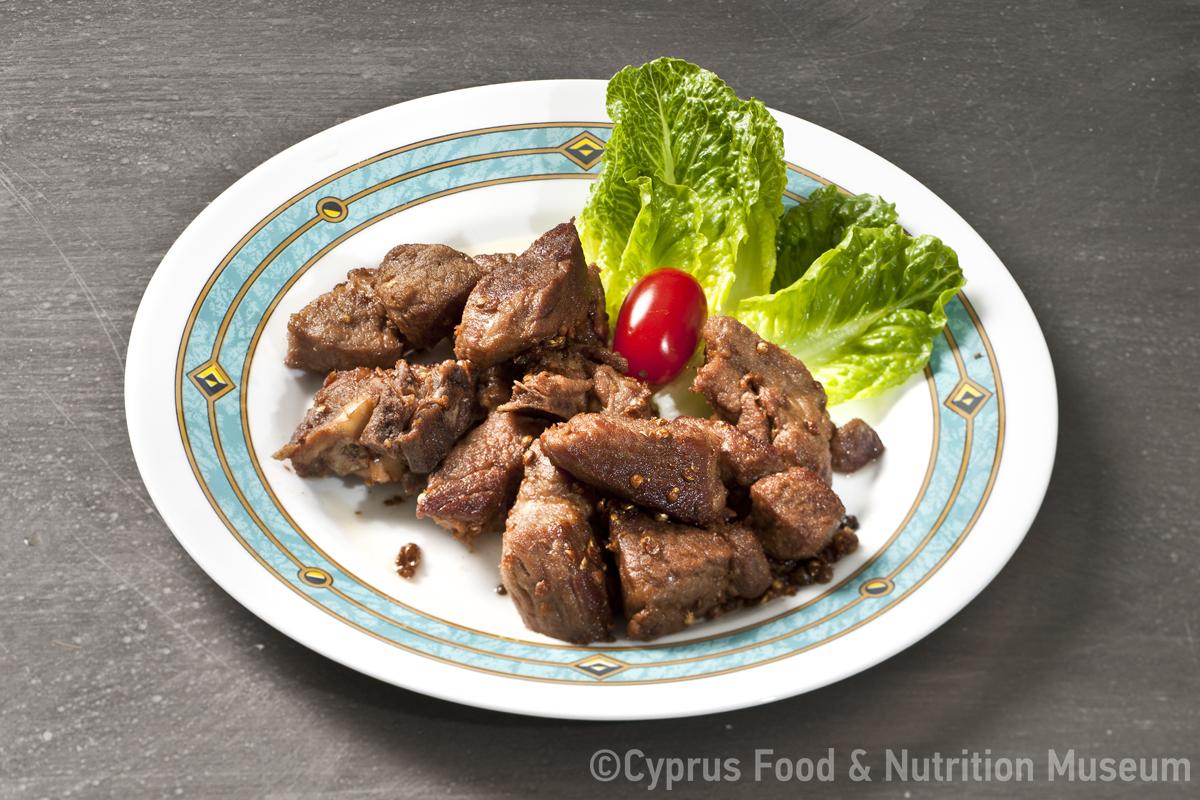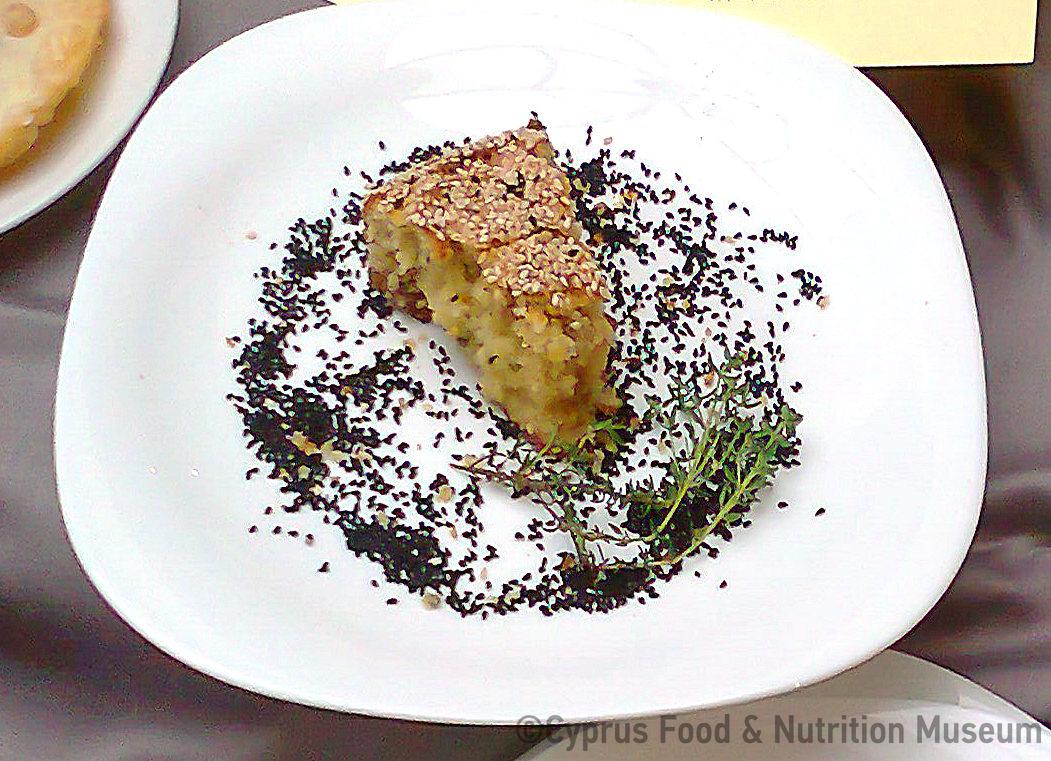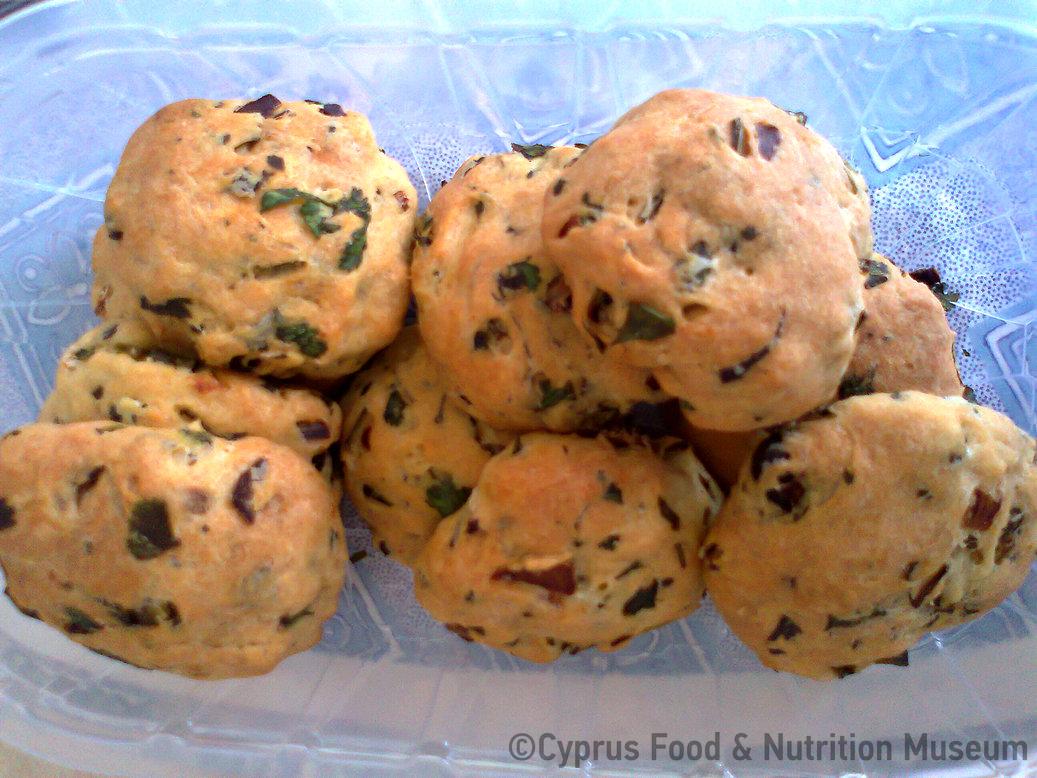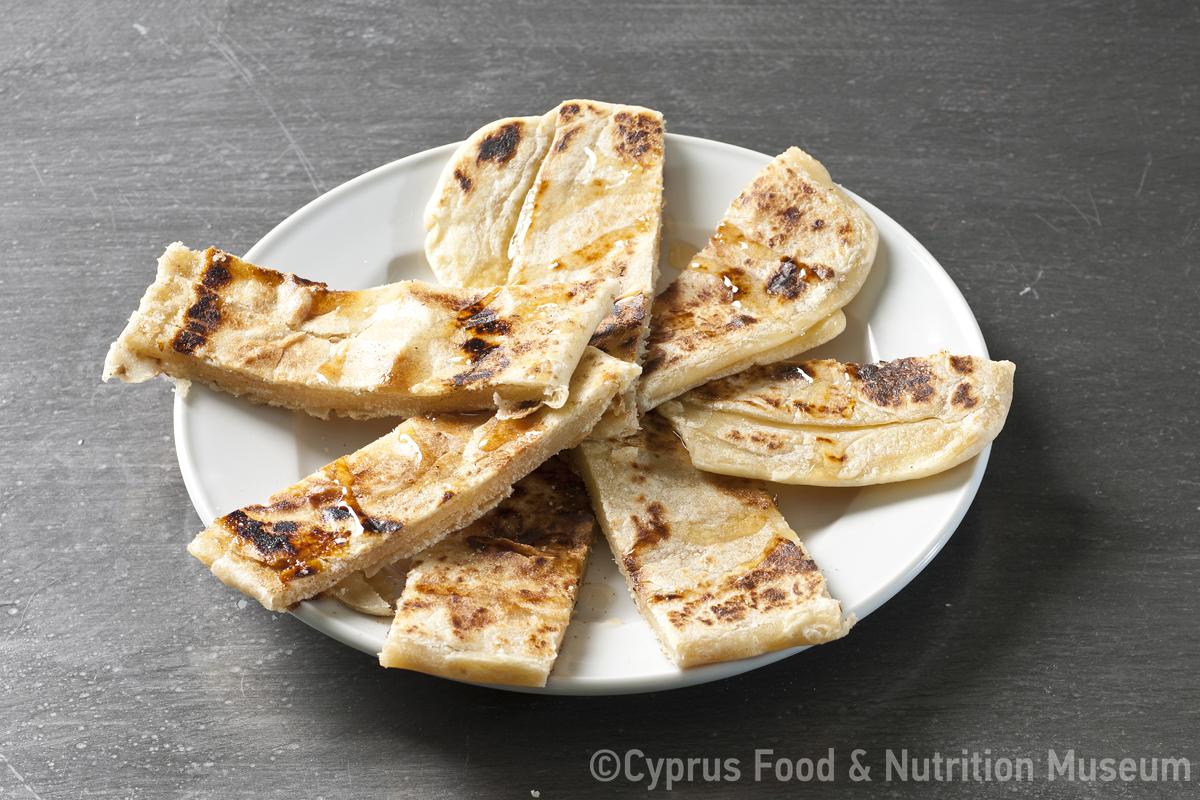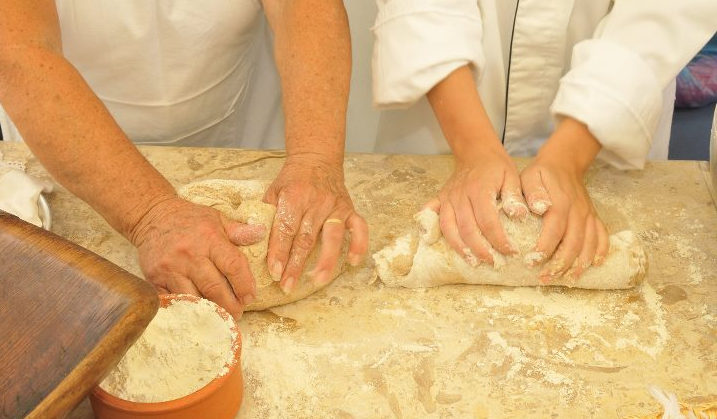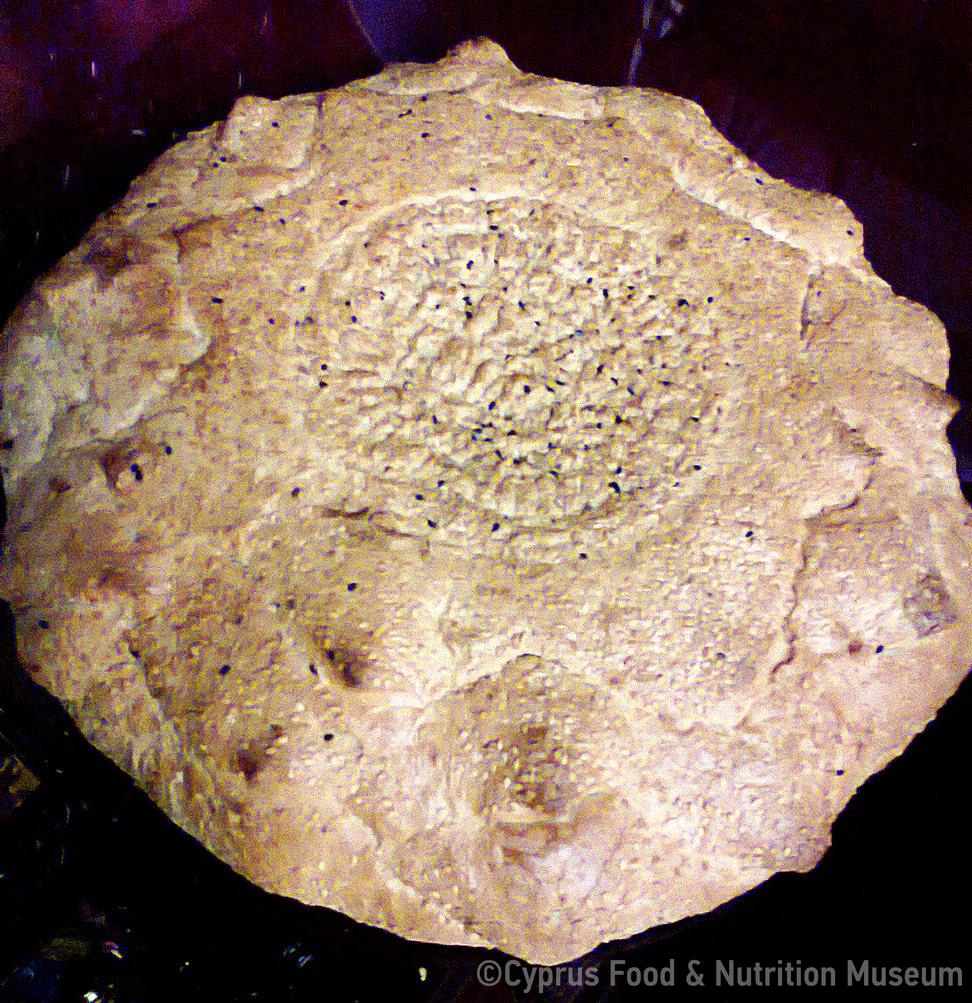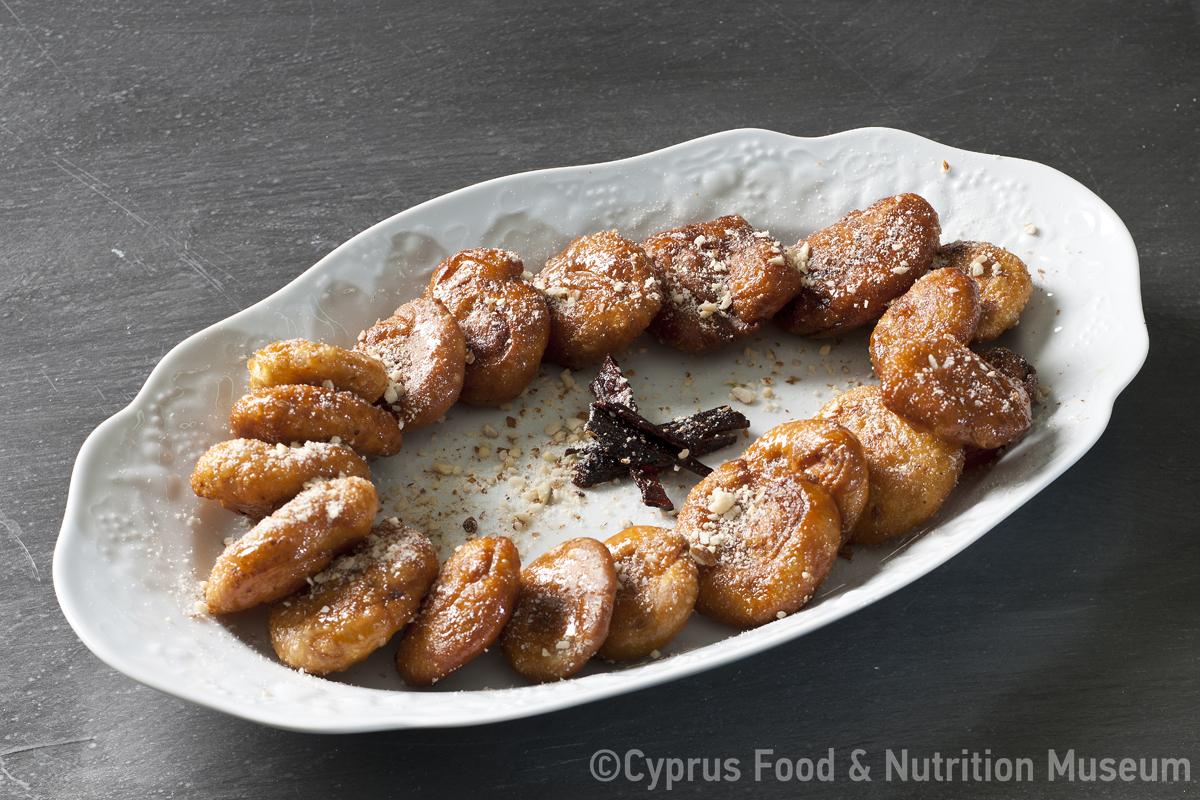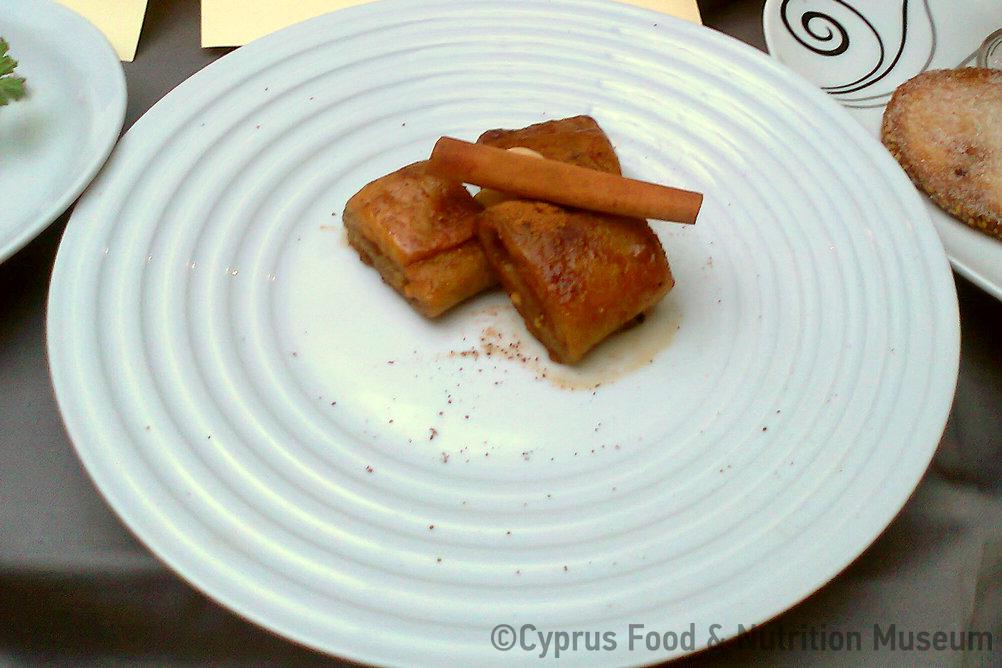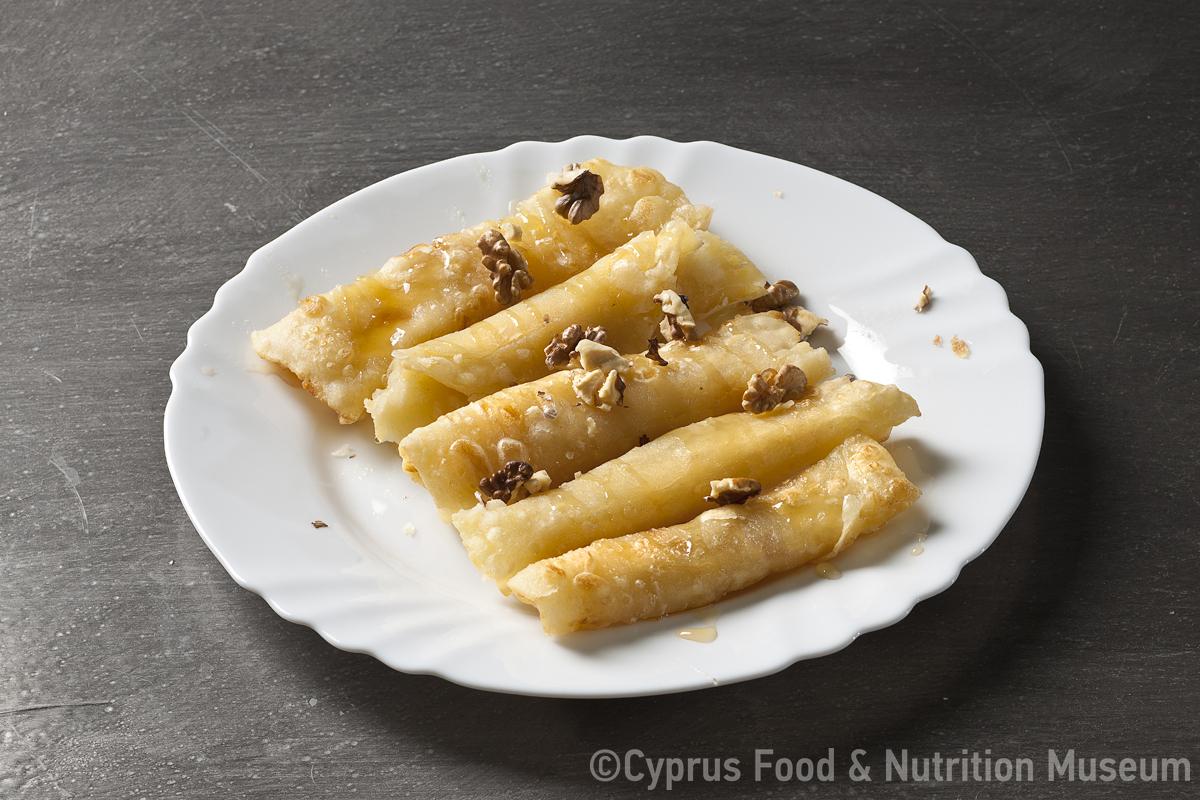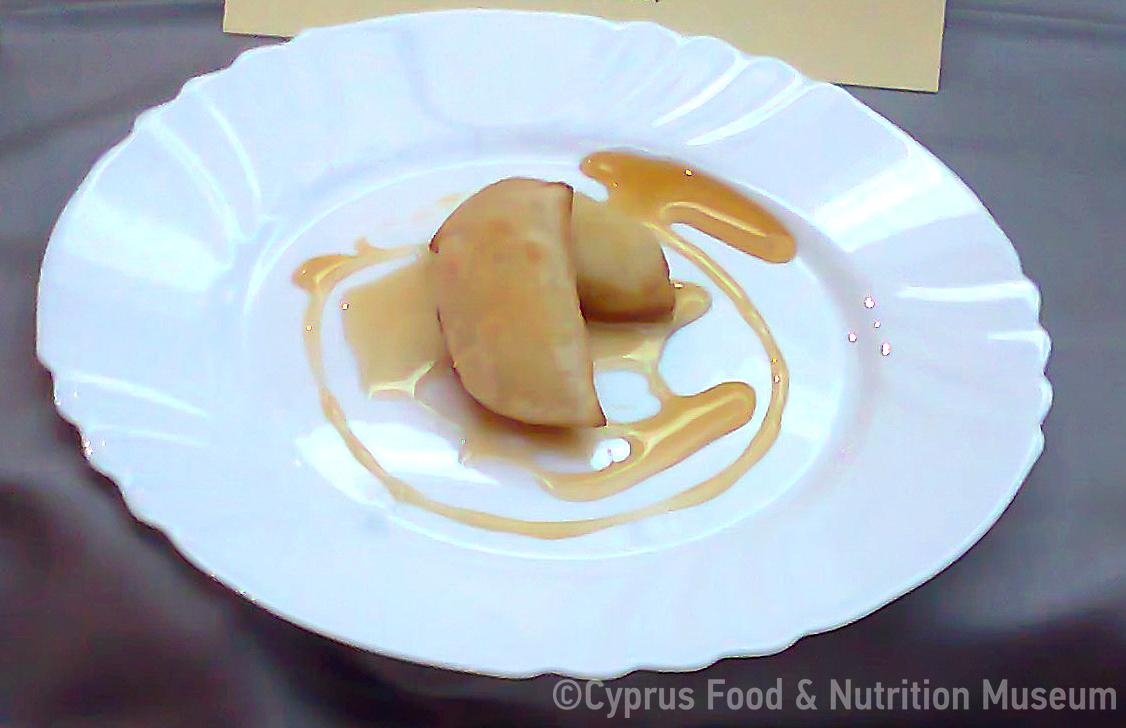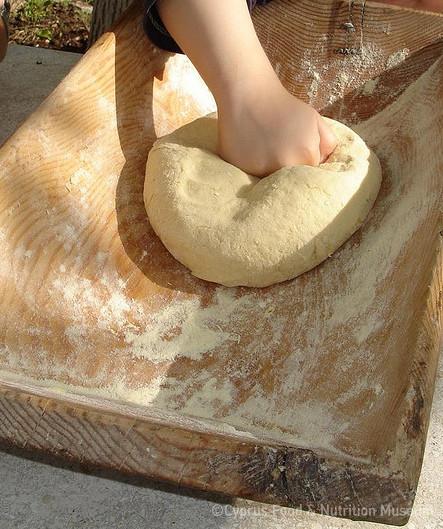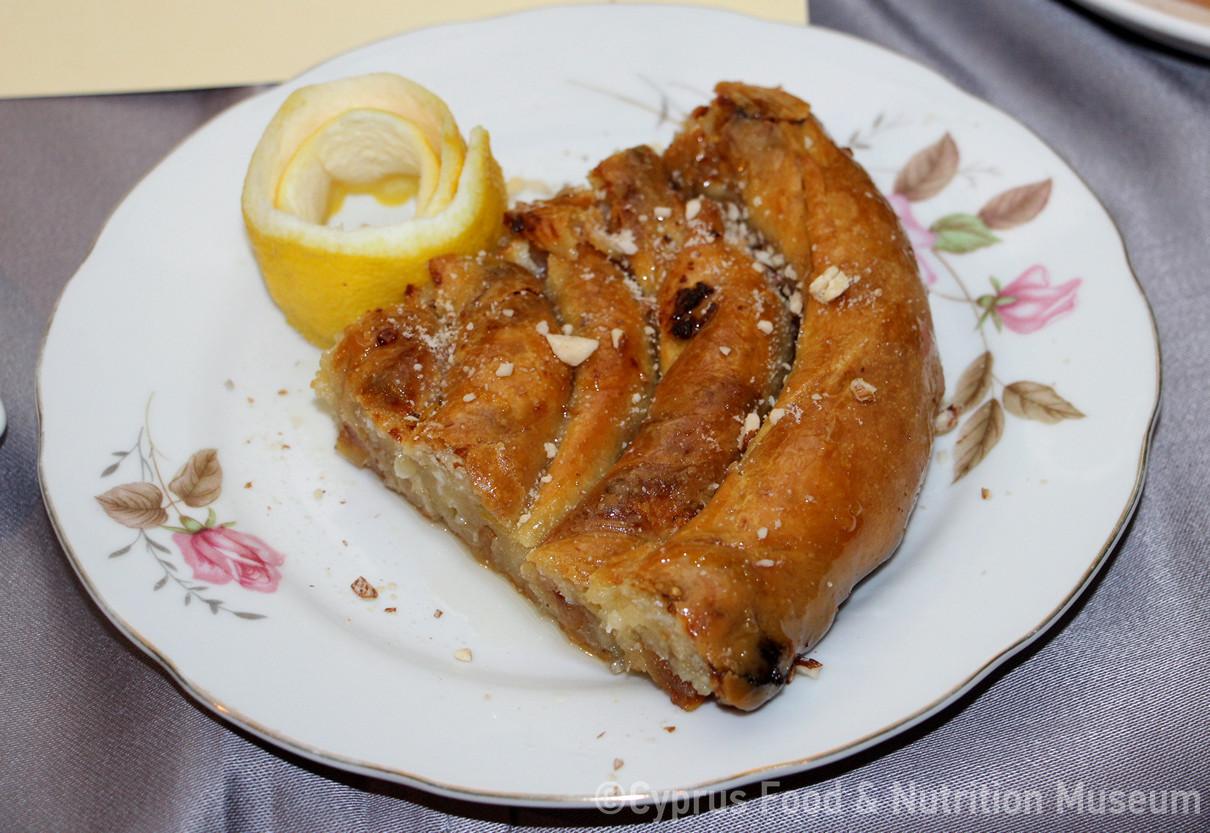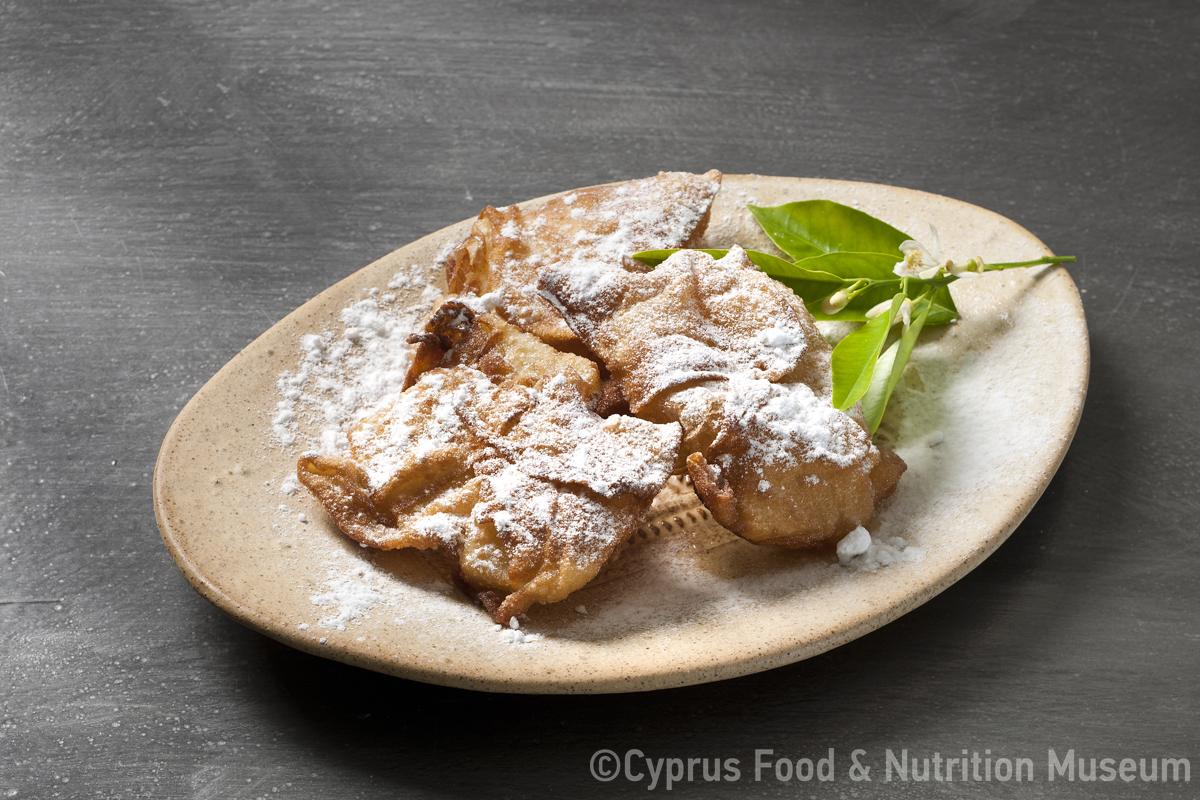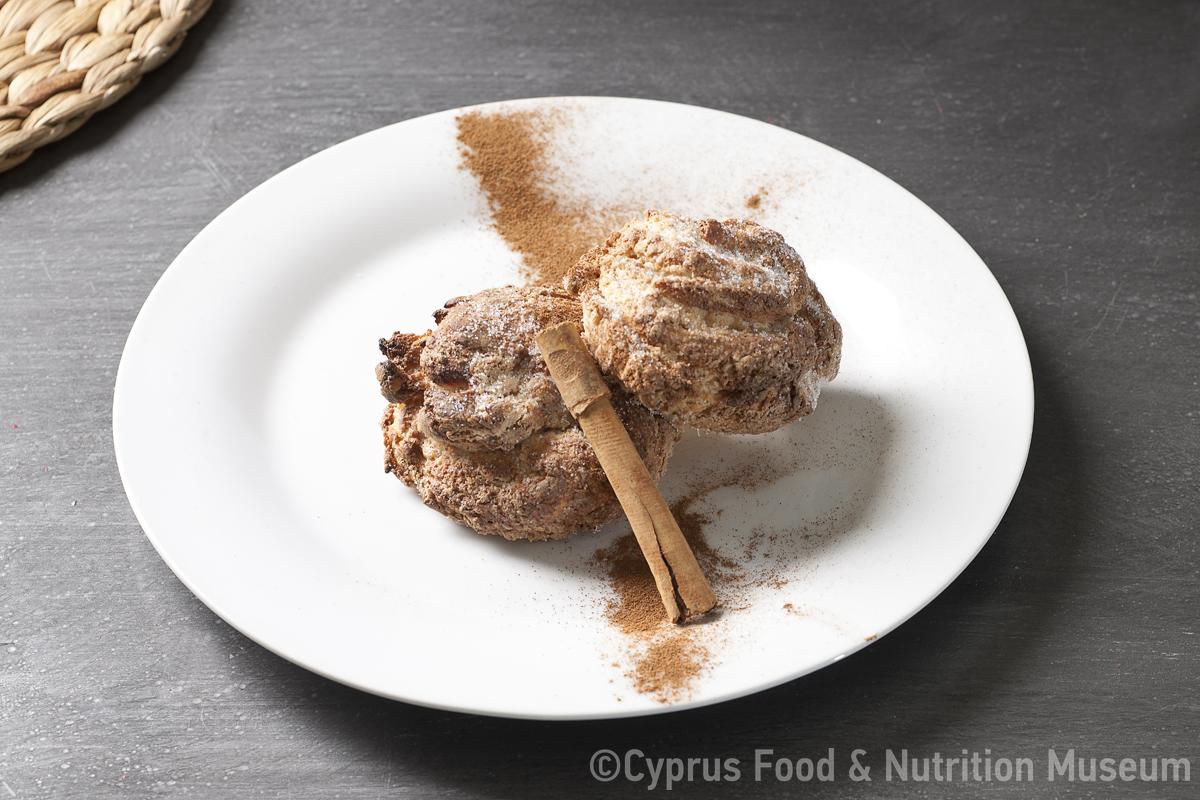Name - Origin
Pittes (a type of flatbread) baked on a special ‘pan’ called satz̆i or satz̆in*.
Pittes tis satz̆is had various names, according to the dough used: the ones which were kneaded without sourdough starter were called anémbates or lytratz̆énes, while those with a starter were called mbatés. Pittes kneaded using a rolling pin were called marzakotés or marzakópittes', while those shaped by hand were called pittakotés. Pittes of 2-3 cm thickness each were called pashópites (pashís in Cypriot dialect means thick/ fat), while pittes of 0.5 cm thickness were called ftanópites or hartópittes. They were also called poúlles (Kypri, Protopapa, 2003). s. pitta pl. pittes
The dough for sakopittes was simple and consisted of water, flour and salt. Housewives would shape the dough by hand or with a madrátz̆in (rolling pin) and bake them on the satz̆i (the hollow part facing down).
Functional and symbolic role
Sometimes olives would be added to the dough. They were usually eaten with halloumi; during fasting periods, they were also eaten with honey or olives. Sakopittes, mainly lytratz̆énes (without sourdough starter) were consumed when a household run out of bread, as they could be prepared quickly. Sakopittes were also prepared on the days of the week that were not suitable for bread kneading, i.e. on Wednesday, Friday and Sunday (Kypri, Protopapa, 2003).
Today, apart from the traditional preparation of sakopittes, there is also industrialised production; they are sold in supermarkets and bakeries. Those with honey are especially consumed during periods of fasting. Note: Demetra Demetriou, 2011.
Additional information and bibliography
*Satz̆i is a slightly hollow metal and round utensil in the shape of a dome on which various kinds of pittes are baked. It is placed over fire either with the cavity facing upwards or downwards while the use of oil is optional.
Kypri Th. - Protopapa K. A. (2003), Παραδοσιακά ζυμώματα της Κύπρου. Publications of the Centre for Scientific Research, XVIII, Nicosia.
Demetra Demetriou
